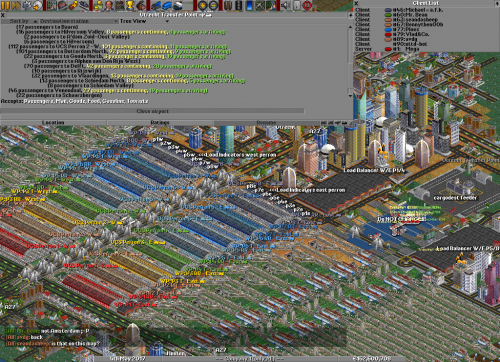 Here’s something you don’t see every day – a map of the United States, where each place is a song title. And to top it off, there’s a Spotify playlist with all the songs for you to listen – a whooping 60+ hours of music.
Here’s something you don’t see every day – a map of the United States, where each place is a song title. And to top it off, there’s a Spotify playlist with all the songs for you to listen – a whooping 60+ hours of music.
Via kottke.org.
 Here’s something you don’t see every day – a map of the United States, where each place is a song title. And to top it off, there’s a Spotify playlist with all the songs for you to listen – a whooping 60+ hours of music.
Here’s something you don’t see every day – a map of the United States, where each place is a song title. And to top it off, there’s a Spotify playlist with all the songs for you to listen – a whooping 60+ hours of music.
Via kottke.org.
Here is an interesting story for all the fans of SimCity and similar games, as well as for anyone who still thinks that computer games are a useless time waste. I’d like to see you try doing something even remotely close to this:
This story reminds me of all the time I spent playing Transport Tycoon Deluxe and OpenTTD. The game is fun and I learned a lot about transportation. But no matter how hard I tried, I never came close to the real pros (there are many actual professionals from the transportation industry playing the game and trying things out). Have a look at this monster train station, for example (found in this forum thread):
 Just stop and think for a moment. How much do you really know about transportation? Trucks, buses, trains, ships, airplanes and helicopters? Roads, maintenance, history and technology change? Road planning, bridges, tunnels, semaphores, roundabouts, ports, loading stations, warehouse? I can go on …
Just stop and think for a moment. How much do you really know about transportation? Trucks, buses, trains, ships, airplanes and helicopters? Roads, maintenance, history and technology change? Road planning, bridges, tunnels, semaphores, roundabouts, ports, loading stations, warehouse? I can go on …
These games teach you a great deal about the complex world around you.
Slashdot has an interesting story of why there are only two variations of the word tea in the majority of languages:
With a few minor exceptions, there are really only two ways to say “tea” in the world. One is like the English term — te in Spanish and tee in Afrikaans are two examples. The other is some variation of cha, like chay in Hindi. Both versions come from China. How they spread around the world offers a clear picture of how globalization worked before “globalization” was a term anybody used. The words that sound like “cha” spread across land, along the Silk Road. The “tea”-like phrasings spread over water, by Dutch traders bringing the novel leaves back to Europe.
The term cha is “Sinitic,” meaning it is common to many varieties of Chinese. It began in China and made its way through central Asia, eventually becoming “chay” in Persian. That is no doubt due to the trade routes of the Silk Road, along which, according to a recent discovery, tea was traded over 2,000 years ago. This form spread beyond Persia, becoming chay in Urdu, shay in Arabic, and chay in Russian, among others. It even it made its way to sub-Saharan Africa, where it became chai in Swahili. The Japanese and Korean terms for tea are also based on the Chinese cha, though those languages likely adopted the word even before its westward spread into Persian. But that doesn’t account for “tea.” The te form used in coastal-Chinese languages spread to Europe via the Dutch, who became the primary traders of tea between Europe and Asia in the 17th century, as explained in the World Atlas of Language Structures. The main Dutch ports in east Asia were in Fujian and Taiwan, both places where people used the te pronunciation. The Dutch East India Company’s expansive tea importation into Europe gave us the French the, the German Tee, and the English tea.
This reminds me of this old post about how most languages, apart from English, use “ananas” as a word for pineapple.
https://www.youtube.com/watch?v=4SAkq6lsnoE
Here’s Gordon Ramsey’s documentary on the shark over-fishing and the horrors of shark finning. I’ve heard about this before, but the video left me speechless.